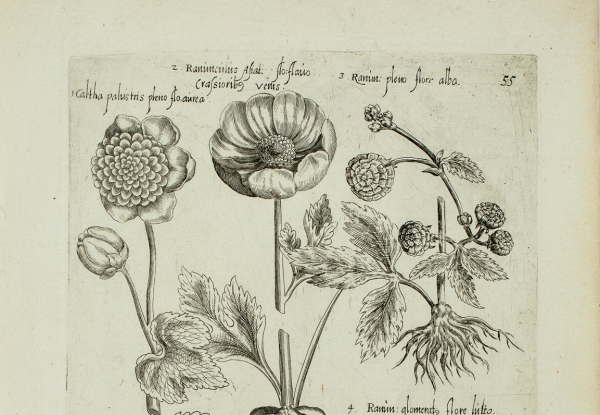A Medicine to the Mind
Early Gardening Catalogs
During this past troubled year, the interest in gardening and growing things has blossomed. Not only plants come from the smallest seeds, but the promise of a brighter future. A garden’s cyclical replenishment can lift our spirits and assure us of nature’s regeneration.
The subjects of this exhibit—early gardening catalogs—are windows into our horticultural past. Their study unites a variety of disciplines: botany, social and economic history, garden and art history. Very few of the thousands of nursery and seedsmen’s yearly catalogs issued yearly over the centuries have survived. Closely aligned with the history of printing, these extremely rare documents provide insights into the development of plant varieties and help us to understand which ones withstood the test of time and how gardening fashions changed. They also show the evolution of printmaking materials and techniques used by commercial nurseries and contain beautiful examples of the art of the plant world.
On display will be original engravings of plants from the first known sales catalog published in 1612. We trace the fascinating history of Tulipmania in seventeenth-century Holland, and the establishment of the influential Chelsea Physic Garden in London. The story then moves to America and John Bartram, the Quaker botanist whose garden in Philadelphia inspired George Washington and Thomas Jefferson. In the mid-nineteenth century, the explosion of sample books produced by commercial nurseries pictured vivid illustrations of food grown for an expanding young continent. These captivating images promised flowers, fruits, and vegetables after a long winter.
Enjoy a virtual tour of A Medicine to the Mind.






